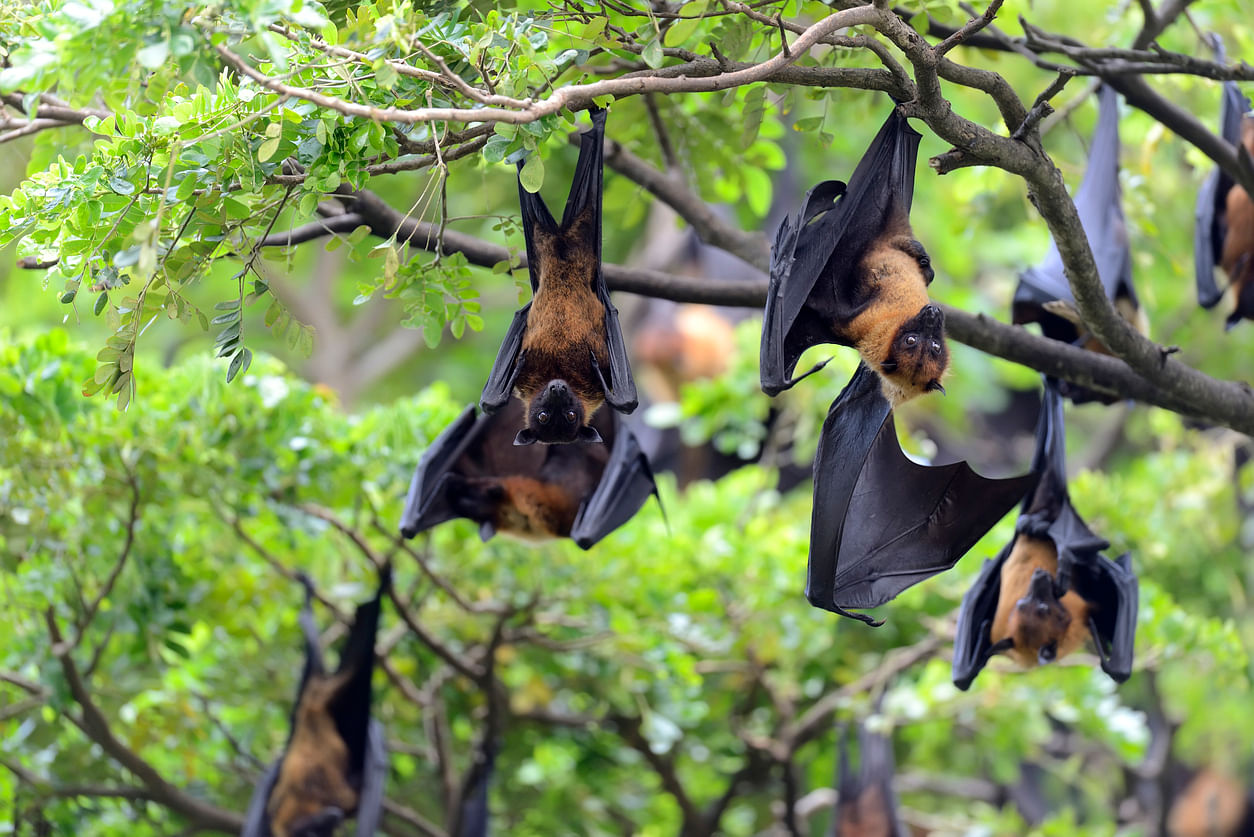
Bats have historically had a bad reputation. With the onslaught of COVID-19, however, they have been unfairly cast in the role of the prime villain, according to a coalition of Indian scientists.
In a statement released over the weekend, 64 scientists and conservationists lambasted moves to harm or dislodge bat populations in the wake of reports that the creatures are responsible for the spread of COVID-19.
Wildlife volunteers told DH that they get frequent calls from private citizens and even from Bengaluru Bruhat Mahanagara Palike (BBMP) officials, asking to drive out or eradicate bat populations in certain areas. "Among them is one individual who is constantly demanding that the BBMP remove a sapota tree from his neighbour’s yard because it attracts bats," a volunteer said.
This is hardly surprising considering that whenever there is an outbreak of disease or a pandemic, the first to receive the blame is the bat, explained Sharath Babu, a wildlife adviser to the Palike. "We saw the same thing happen during the Nipah outbreak in 2018," he said.
While bats are known carriers of pathogenic viruses such as rabies, Hendra, Marburg, Nipah and Ebola, it is important to note that there is no direct transmission of the diseases from bats to humans, according to Dr Seshadri K S of the Indian Institute of Science.
"If people ate a bat or a fruit half-ingested by the bat, that is when transmission could occur," he said and pointed out that the creature played a key role in maintaining the ecological balance.
"They help in fruit pollination and keeping insect populations (especially mosquitoes) down," he explained.
A misrepresented ICMR report
Researchers said that the situation worsened following a March 26 paper on bats from the Indian Council of Medical Research (ICMR), which was misrepresented in the media. The study determined that the novel coronavirus was found in two species of South Asian bats - the Indian flying fox (Pteropus medius) and the fulvous fruit bat (Rousettus leschenaultii).
Dr Pragya D Yadav of the National Institute of Virology helped write that paper. Yadav said that their study, which began in 2018, was focused on the Nipah virus. He did confirm that the team began to check bats across 10 states for the SARS-CoV-2 virus that causes COVID-19 towards the end of 2019.
“Many of these bats are known to harbour coronaviruses but this bat coronavirus is only 96% identical to the SARS-CoV-2 virus at the whole genome level. This makes them completely different. They cannot cause COVID-19,” Yadav said.